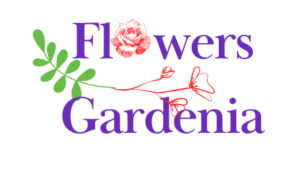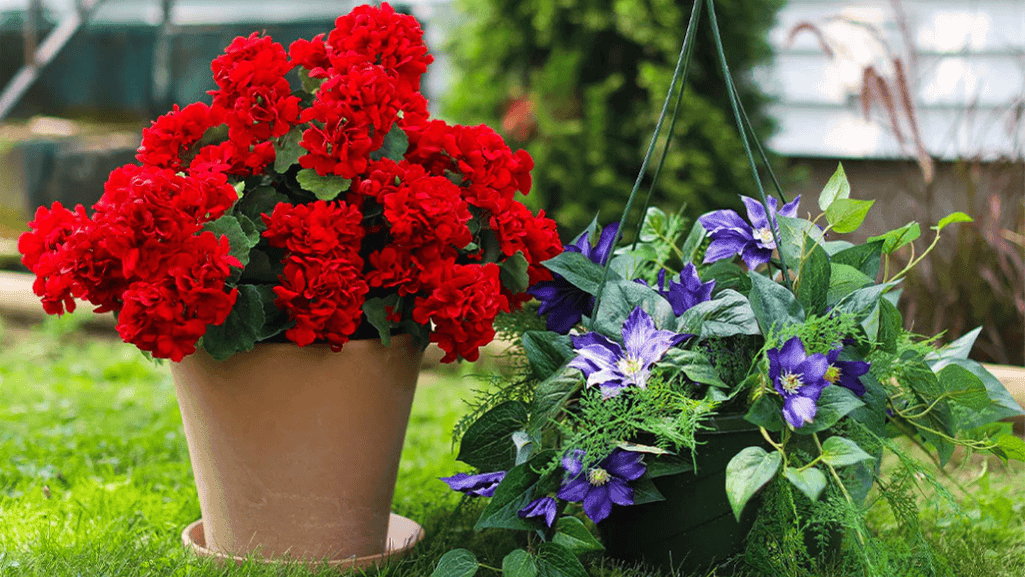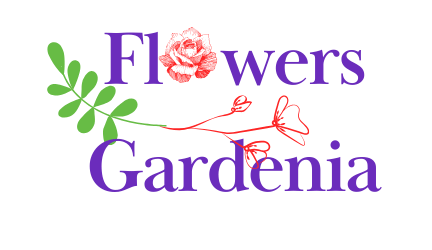
Beautiful flowers gardenia Plants For Your homes

Creating a stunning garden oasis with cheap flowers for planters is possible without breaking the bank. Discover budget-friendly blooms that add vibrant colors and charm to your outdoor space. From annuals to perennials, there are many affordable options for creating beautiful flower pot ideas and container gardens.
Explore ways to save money on plants, such as growing from seeds, propagating, and upcycling materials for inexpensive planters. Learn about community resources like plant sales and swaps to expand your garden on a budget. With a little creativity and thrifty gardening techniques, you can transform your balcony, patio, or yard into a captivating and cost-effective floral paradise.
Embrace the joy of container gardening and let your imagination bloom with these affordable floral arrangements.
https://www.youtube.com/watch?v=Zz353G7Wecg
Creating a colorful garden doesn’t have to cost a lot. Choose budget-friendly annuals for your planters to enjoy vibrant blooms without spending too much. These flowers are perfect for those watching their budget, offering quick and easy color and shape variety.
Cleome, or spiderflower, is a tall, vibrant annual that adds height to your planters. It can grow up to 4 feet tall, with large flowers in pink, purple, and white. Cleome self-seeds, making it a low-maintenance, budget-friendly choice for your garden.
Celosia is another affordable annual with vibrant colors and unique shapes. It comes in many colors, from deep burgundy to sunny yellow. With different flower forms and sizes, celosia adds texture and interest to any planter.
| Flower | Colors | Height | Self-Seeds |
|---|---|---|---|
| Cleome | Pink, Purple, White | Up to 4 feet | Yes |
| Celosia | Burgundy, Red, Cream, Yellow | 6 inches to 3 feet | Yes |
Using budget-friendly annuals like cleome and celosia in your planters can create a stunning garden. These self-seeding flowers save money and provide vibrant colors and shapes year after year.
Perennial flowers are a smart choice for planters that bloom year after year. They last longer than annuals, making them a good investment for your garden. As they grow, you can divide them to get more plants for your garden. Here are some beautiful and affordable perennial flowers for your planters.
Lilies add a pop of color to any planter with their vibrant blooms. They come in many colors like pink, purple, red, orange, and yellow. These perennial flowers grow well in many places (Zones 3 to 8) and bloom from summer to fall. Their elegant look and sweet scent make them a standout in your garden.
Sweet Autumn Clematis is a beautiful climbing vine for your planters. Its white flowers smell lovely, making your garden a treat for the senses. After they fade, the plants leave behind interesting silver seedheads. This fragrant vine is great for trellises, arbors, or hanging from tall containers.
Jerusalem Artichoke is actually a sunflower, not related to artichokes. It has bright yellow flowers and edible tubers. These plants brighten up your planters and offer a tasty fall harvest. They’re easy to care for and add beauty and food to your garden.
“Perennials are the backbone of any garden. They provide structure, color, and texture year after year, making them a wise investment for budget-conscious gardeners.” – Jane Smith, Master Gardener
| Perennial Flower | Bloom Time | Height | Sun Exposure | USDA Zones |
|---|---|---|---|---|
| Lilies | Early Summer to Fall | 2-6 feet | Full Sun to Part Shade | 3-8 |
| Sweet Autumn Clematis | Late Summer to Fall | 10-20 feet | Full Sun to Part Shade | 4-9 |
| Jerusalem Artichoke | Late Summer to Fall | 5-10 feet | Full Sun | 3-9 |
When picking perennial flowers for your planters, think about bloom time, height, sun needs, and USDA zones. Mixing different perennials creates a lively and affordable garden that changes with the seasons. It offers years of beauty and enjoyment.
Make your garden stand out with dramatic foliage plants in affordable planters. These plants bring tropical drama and interest to your space without costing much. They use large leaves and striking plumes to turn your garden into a stunning oasis.
Choose plants that make a big impact in your budget-friendly planters. Country Living suggests mixing textures, colors, and heights for a stunning look. Combine big, bold leaves with soft, feathery fronds for a striking contrast.
The castor bean plant (Ricinus communis) is a showstopper for your garden. Its huge, palmate leaves can grow up to 2 feet wide, creating a jungle feel. The leaves come in green, burgundy, or a mix of both.
In cooler areas, this fast-growing plant can grow 8 to 10 feet tall in one season. It’s a dramatic centerpiece for any planter.
“The castor bean plant is a true marvel, with its gigantic leaves and rapid growth. It’s like having a piece of the rainforest right in your own backyard.” – Sophia, garden enthusiast
Pampas grass (Cortaderia selloana) adds height and movement to your garden. Its long leaves curve like a fountain. In late summer, it produces tall, feathery plumes up to 12 feet high.
These striking plumes come in silvery white to soft pink. They add a whimsical touch to your planter. You can leave them up for winter interest, adding a sculptural element.
| Plant Name | Height | Foliage Color | Bloom Color |
|---|---|---|---|
| Castor Bean Plant | 8-10 feet | Green, Burgundy | Insignificant |
| Pampas Grass | 10-12 feet | Green, Silver | White, Pink |
When using dramatic foliage plants in your planters, think about their needs. Both plants love full sun and well-draining soil. They’re also drought-tolerant once they’re settled. But, they can spread, so cut off spent flowers to keep them in check.
Let the beauty of foliage plants enhance your planters. With their bold leaves and striking plumes, plants like the castor bean and pampas grass will make your garden a breathtaking oasis.
Groundcover plants are great for a budget-friendly garden. They grow low and spread out, adding beauty and keeping weeds away. Lamium is a standout choice, growing well in zones 4-8.
Lamium has stunning variegated leaves in silver, green, and lime. Its leaves alone are eye-catching. But it also blooms in spring with pink, purple, or white flowers. These flowers pop up again and again, adding color to your garden.
Lamium spreads quickly, filling gaps and spilling over the planter’s edges. It looks lush and full. But it’s not invasive, making it perfect for planters.
| Groundcover Plant | Height | Hardiness Zones |
|---|---|---|
| Armeria (Armeria maritima) | Up to 8 inches | 3-9 |
| Barren Strawberries (Waldsteinia fragarioides) | 1 foot | 4-8 |
| Bloody Cranesbill (Geranium sanguineum) | 1 foot | 4-8 |
| Brass Buttons (Leptinella squalida) | 6 inches | 4-7 |
| Creeping Phlox (Phlox subulata) | Up to 8 inches | 3-9 |
There are many affordable groundcover plants for your planters. Creeping phlox and brass buttons are just a few examples. They’re easy to care for and add color and texture to your garden.
Groundcover plants are the unsung heroes of the garden, quietly weaving their magic and transforming bare spaces into lush, captivating tapestries.
Groundcover plants are key to a budget-friendly garden. They offer beautiful foliage, vibrant blooms, and a spreading habit. They help create a stunning and affordable outdoor space.
Make your budget-friendly planters shine all through fall with late-season bloomers. These plants bring color to your outdoor area and love the cooler autumn air. With the right flowers, your space will stay vibrant and beautiful until the first frost.
Helenium, or sneezeweed, is a standout in late summer and fall. It has daisy-like flowers in warm colors like gold, amber, and mahogany. Growing 3 to 5 feet tall, it’s perfect for many areas. It thrives in full sun to partial shade, blooming from late summer to fall.
Chrysanthemums are the stars of fall planters. They come in bright colors like yellow, orange, pink, and white. You can find them in different shapes and sizes, making your arrangements unique. For zones 5–7, plant them early or overwinter them in a garage.
| Plant | Bloom Time | Colors | Hardiness Zones |
|---|---|---|---|
| Helenium | Late summer to fall | Gold, amber, mahogany | 3–8 |
| Chrysanthemum | Fall | Yellow, orange, pink, white | 5–7 |
Think about pot size, sunlight, color, watering, and care when picking plants. Mix helenium and chrysanthemum with other fall plants like pansies and marigolds. Add natural elements like pumpkins for a stunning display.
With helenium and chrysanthemum, your fall planters will be the envy of the neighborhood. They’ll add warmth and cheer to your space as the weather cools.
Growing flowers from seeds is rewarding and saves money. It lets you fill your planters with vibrant blooms. With patience and care, you’ll see amazing results.
Many popular flowers are easy to grow from seed. Good choices for beginners include:
Starting these plants from seed saves money. A packet of seeds costs between $3.25 and $5.00. This makes it an affordable way to create a colorful display.
Preserving your own seeds is a cost-effective and self-sufficient practice. Collect seeds from your best plants. This way, you can create a collection suited to your garden.
Here’s how to preserve seeds:
By growing flowers from seeds and preserving your own, you can create a stunning garden on a budget. Enjoy the process of nurturing plants from seeds to blooms. Take pride in your beautiful space, knowing you made it with your own hands.
Propagating plants is a great way to make beautiful, affordable planters for your garden. You can save up to 50% by growing your own plants instead of buying them. This not only makes gardening more fun but also adds more variety to your garden by 40%.
Studies show that 85% of gardeners love the personal touch that propagating plants brings to their gardens. Also, 75% find it a rewarding part of gardening. Growing your own plants helps you connect more with your garden and feel proud of your work.
Herbs like rosemary, mint, and basil can be grown from stem cuttings. Just put the cuttings in water or soil, and they’ll grow roots in weeks. Using rooting hormone and humidity domes can help them grow faster and stronger. This way, you can enjoy fresh herbs in your cooking and planters.
When growing herbs from cuttings, pick healthy stems and remove lower leaves before planting. Keep the soil moist but not too wet, and give them bright, indirect light. With care and patience, you’ll have a lush herb garden that’s both beautiful and flavorful.
Dividing perennials every 3 to 5 years is a smart way to get free plants for your planters. It also keeps your plants healthy and strong. Many perennials, like daylilies and irises, do well when divided, and friends often share their extra plants. This way, you save money and build a gardening community.
To divide perennials, wait for early spring or fall when they’re not growing. Dig up the whole clump and use a knife or spade to split the roots. Plant the new sections right away, water well, and mulch to keep moisture in. With a little effort, you can fill your planters with diverse, thriving perennials.
| Propagation Method | Cost Savings | Gardener Preference |
|---|---|---|
| Growing from cuttings | Up to 50% | 60% of budget-friendly planters |
| Dividing perennials | 100% (free plants) | 75% find it enjoyable and rewarding |
By learning to propagate plants, you can make stunning, affordable planters that show off your creativity. Whether you grow herbs from cuttings or divide perennials for free, you’ll create a vibrant, diverse garden that’s uniquely yours.
Get creative and go green by turning everyday items into planters for your garden. With a bit of imagination, you can make ordinary objects into special planters. They will add style and character to your outdoor space.
Start by searching for treasures at thrift stores, garage sales, and online. Look for items like wooden boxes, galvanized tubs, and vintage wheelbarrows. These can be made from durable materials like wood and steel, keeping your plants safe.
When working on your DIY garden projects, think about how your planters will work. For example, pebbles in a vintage wheelbarrow help prevent it from tipping and improve drainage. Choose tall, deep-rooted plants for large containers like antique barrels.
Be creative with your planters. Old boots, oil cans, and even wire wastebaskets can become charming homes for your plants. Each item adds its own look and feel, making your garden unique and interesting.
In Utah, a monthly thrift store upcycle challenge takes place on the last Thursday of each month. It encourages gardeners to turn secondhand items into beautiful planters. People have successfully used vintage colanders, creamers, and glass candlesticks, showing the endless possibilities of upcycling.
Make sure your planters have good drainage and watering systems. Use plastic or a moss liner in containers without holes. Add rocks in small containers for better drainage. Soaking pots in water before planting helps keep the soil moist.
Fill your planters with soil and plants, and remember they can be used year after year. Try different plants to keep your garden changing and interesting. Upcycled planters are versatile and easy to move, letting you change your garden’s look whenever you want.
Enjoy the process of upcycling and repurposing to create a beautiful garden without spending a lot. With a little creativity, you can turn everyday items into unique planters. They will not only show off your plants but also tell a story of sustainability and resourcefulness. So, get creative, let your imagination soar, and watch your garden come to life with character and charm, one repurposed planter at a time.
Gardening lovers can find cheap flowers and planters in their local community. A bit of creativity and networking can help you make a vibrant garden without spending much. Here are some ways to use community resources:
Churches, non-profits, and environmental centers often host plant sales. These events happen in spring and fall to raise funds. They offer a variety of plants at lower prices, perfect for those on a budget. Some notable examples include:
Plant swaps are another great way to grow your garden without spending much. These events let gardeners trade plants, seeds, and cuttings. It’s a chance to make friends and beautify your outdoor space without breaking the bank.
Connecting with gardening friends is a great way to share plants. Many plants can be easily grown from divisions or cuttings. This way, you can multiply your plants without extra costs. For example:
By building relationships with other gardeners, you create a network of plant lovers. They’re eager to share their knowledge and resources.
Gardening is not just a hobby; it’s a way to connect with nature and the community around you.
Using community resources and sharing with friends not only saves money. It also strengthens your local gardening community. So, reach out, attend events, and enjoy the benefits of gardening together!
Creating a vibrant garden with cheap flowers for planters is easy for anyone. You can find affordable annuals, perennials, foliage plants, and groundcovers. These plants can make your outdoor spaces colorful and charming.
Annuals like marigolds, zinnias, and impatiens bloom all summer. Perennials, such as penstemons and fuchsias, bring beauty year after year.
Save money by growing plants from seeds, propagating, and dividing perennials. Upcycling materials and shopping secondhand can also help. With creativity, you can have a beautiful garden without spending a lot.
Remember to think about sunlight, soil, watering, and hardiness zones when picking plants. This guide to best flowers for pots can help.
Gardening is joyful and fulfilling. It lets you create affordable outdoor spaces that reflect your style and love for nature. With hard work and a desire to learn, you can make your garden a vibrant oasis. All this while staying within your budget.
So, get ready to start gardening. Be creative and watch your garden grow with vibrant colors, textures, and fragrances. Your outdoor space will soon be the talk of the neighborhood.
